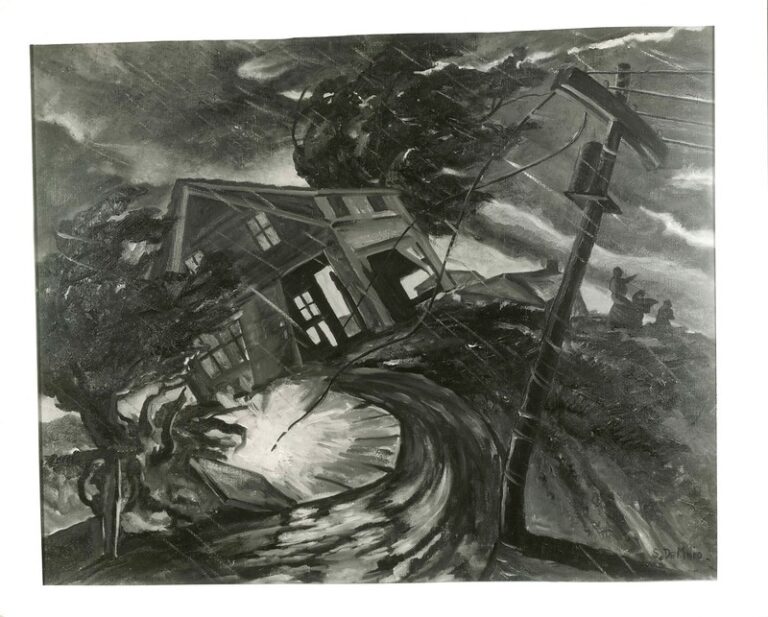The Failure of Familial Communication in Happiness, as Such
In her novel Happiness, as Such, originally published in 1973 and recently translated from the original Italian into English by Minna Zallman Proctor, Natalia Ginzburg brings readers into the lives of a dysfunctional Italian family. Though the family members either painfully misunderstand one another or purposefully elide one another’s feelings, their actions are not intentionally malicious—they are, rather, the outcome of their not knowing how to talk to one another. As a result, they can never meaningfully connect.
Ginzburg depicts the failure of communication amongst these family members cleverly, using letters and short, third-person narrated sections to slowly reveal the dysfunction to her readers. Through these letters, we tease out the crux of the story: failed marriages within the nuclear family and among the family’s ancillary friends, the protracted illness and death of the family’s patriarch, and various escapades each character gets into. Much of the plot, however—and most of the emotional fixation—centers on the messy life of the only son, Michele, who seems to be involved in radical political action and eventually flees to England.
Using letters as the main structure for a novel might come across as a bit gimmicky. There are moments where it is difficult to follow the narrative because readers must wade through characters bemoaning something banal happening to them or begging someone for money. Once readers get into the rhythm of the story, however, Ginzburg’s structural genius becomes more apparent. The letter format reiterates the one-sided and often self-absorbed mode of communication that underlies how the family relates to one another. A letter provides the writer with the chance to speak at the recipient, without the need to worry about maintaining an equal dialogue between two people. A letter is a one-way conversation housed in a few sheaves of paper—until the recipient decides to write back.
Ginzburg’s formal choice also gives readers the opportunity to read between the lines, since we are exposed to a series of letters covering a large span of years. We slowly uncover the pain that underlies much of the initially self-indulgent seeming correspondence, pain that stems from the realization that there is a breakdown of understanding that seems unfixable. This gradual realization occurs amongst the story’s characters over the entirety of the novel, while at the same time readers become more familiar with each letter writer and their trajectory. In one letter, for example, the mother, Adrianna, brings up her disappointment in Michele, writing, “I doubt you’ll come over for my birthday because I don’t think you’ll have remembered it.” Later, Adrianna writes to Michele again, but this time her disappointment is laced with a resigned ambivalence. She mentions calling a carpenter to build a cage for some newly acquired rabbits even though she had previously asked Michele for help: “I knew I wouldn’t be able to rely on you for this tiny favor. I understand it’s not your fault. But the way things go it seems like I can never count on any little favors from you.”
Though communication seems to fall flat for the characters at each attempt, the letters themselves reveal their desire to keep trying. Though Adrianna repeatedly mentions her disappointment and confusion regarding Michele’s life choices, she also continually begs him to send her his latest address as he moves between towns and, eventually, to a different country. Readers get the sense that Adrianna desperately wants to understand her son and connect with him but does not know how. Often the characters are even unsure if they will receive a response, or whether that response will even acknowledge anything they said in their original letter, yet the characters continue to write them anyway.
Michele is the only character who seems uninterested in using letter writing to bridge an interpersonal gap, which makes him less legible for readers, as well as for the rest of his family. Yet here, too, Ginzburg manages to maintain a nuanced characterization. At first, Michele reads simply as the spoiled son of the family with little concern for anyone but himself. Over the course of the novel, however, a more complicated character emerges. We learn he had some link with a radical political group at one point, but by the time readers enter the world of the novel, he has drifted away from that and is listlessly traveling. Though the tinge of privilege bubbles through in some of his letters, readers start to see a character who is impenetrable but clearly lost in life. Most of the letters that Michele sends to his family members are direct requests for something—for money, for specific items of clothing to be forwarded on to him, or for his sister to run over to his apartment to get rid of a gun one of his friends stashed in his stove. His family members comply with his requests, sending him confirmation after completing these tasks, but when they try to connect with him on any deeper level, he simply ignores them.
It seems, then, that Michele is the only character who faces the dysfunction in his family. Unlike his mother and sisters, Michele is quite direct about how little he wants to divulge. In a letter to his sister, Angelica, he writes, “Avoid forming hypotheses about me. Anything you would hypothesize would be wrong because you don’t have all the essential information.” He openly acknowledges that he withholds himself from the rest of the family but doesn’t make any move toward reconciliation or transparency. This distance between Michele and his family mirrors the distance between Michele and the reader. As mentioned earlier, the novel is mostly told through letters; there, however, are a few third-person scenes that occasionally follow one of these letters. In these scenes, we get a better sense of Adrianna’s isolation and we follow Michele’s sisters and friend as they complete Michele’s various requests. In these moments, we get examples of the characters’ internal lives, which flesh out the personalities that come out in the letters. But there is no such scene with Michele. All we know about him appears in the family’s memories relayed through the letters and his own terse words.
The novel does not end with reconciliation or a satisfying moment where two characters come to some sort of understanding of each other. Instead, there is a second death in the family. Though the family attempts to face their unexpected sorrow, the tragedy means that the chance at understanding or connection is unavailable forever. In this way, Happiness, as Such presents readers with an “unhappy” ending, forcing us to consider whether certain types of dysfunction can actually be overcome. In the wake of loss, the remaining characters try to come to terms with what they would have said differently, what was never said, and how they will move toward the future.
The novel ends with a letter from Osvaldo, Michele’s friend, written to Angelica. In it, Osvaldo describes his trip to England, where Michele last lived, and his search for closure about his friend. Even in this final letter there is no deepened understanding of Michele or closure regarding the events of the novel. Instead, Osvaldo writes that “nothing brings consolation when there is nothing left, and seeing [Michele’s] dusty undershirt in that kitchen, and then leaving it behind, was a strange, icy, lonely consolation.” In a similar way to Osvaldo’s final words, we are also left with a melancholic consolation as we close the book, left without a happy ending. There are no clear solutions in Happiness, as Such and even Osvaldo’s final attempt to understand the life of his friend feels bleak and unfulfilling. Ginzburg presents an engrossing emotional rollercoaster through a family’s dysfunction that manages to be both haunting and deeply human.
This piece was originally published on October 7, 2019.


